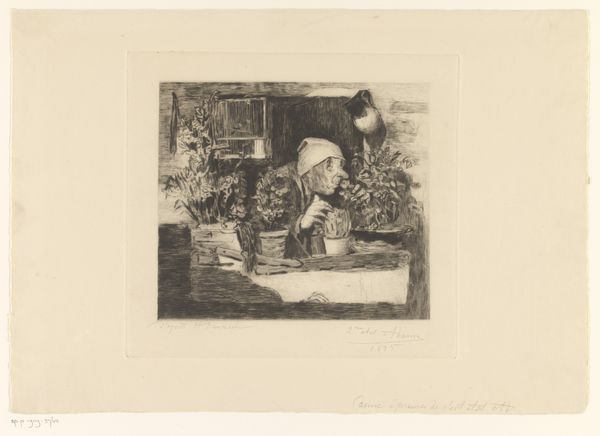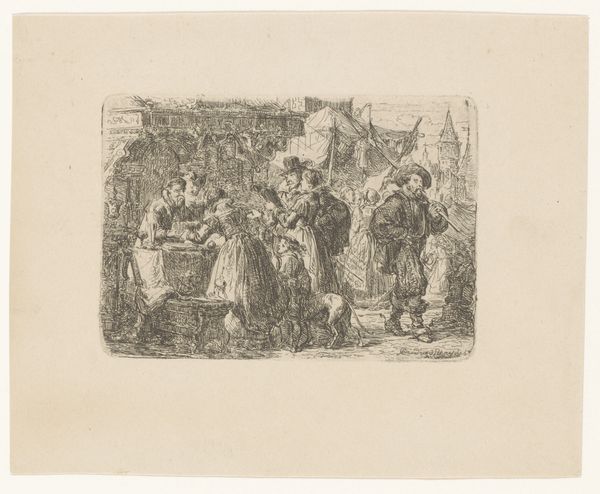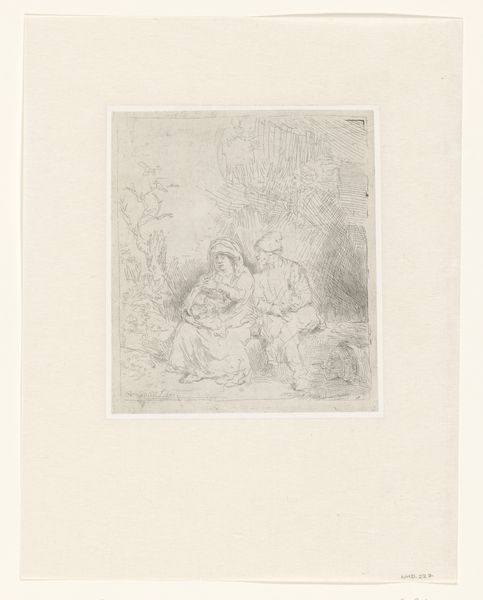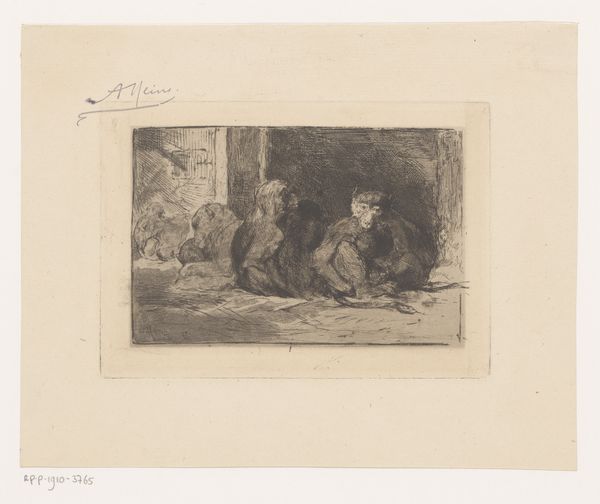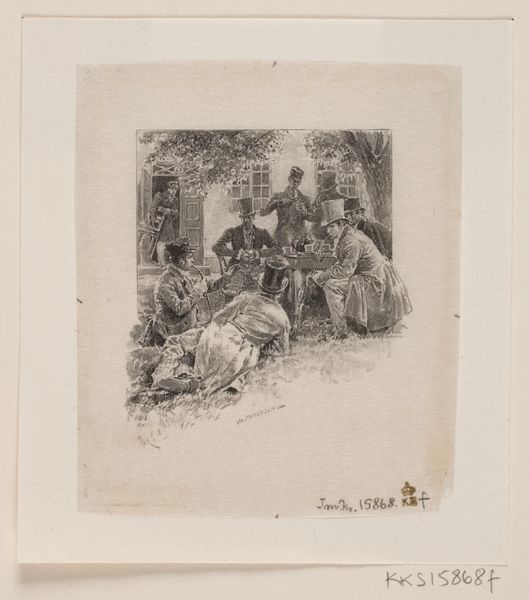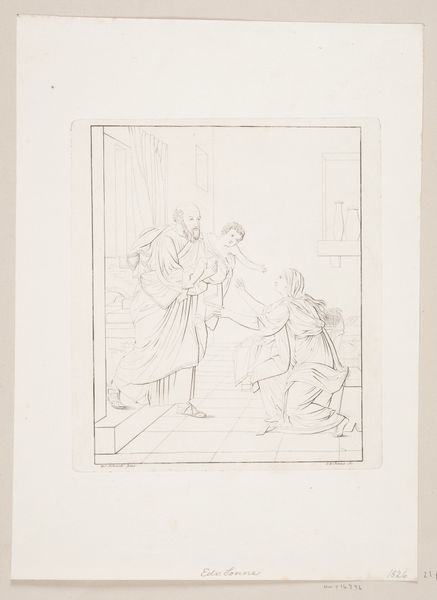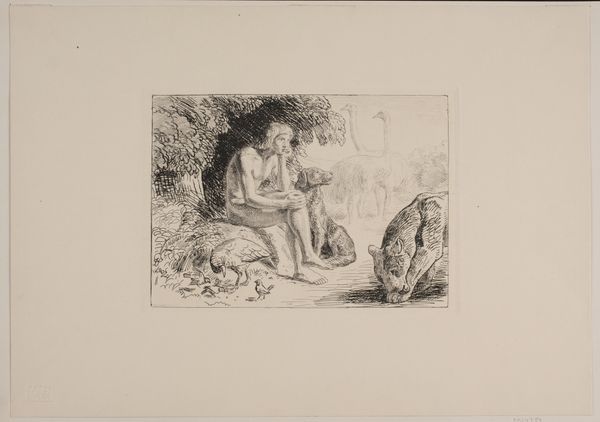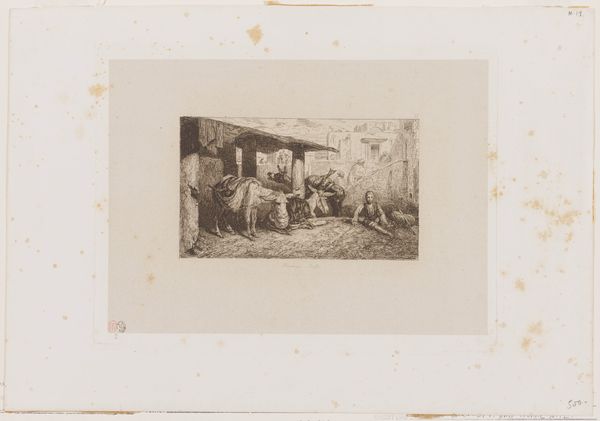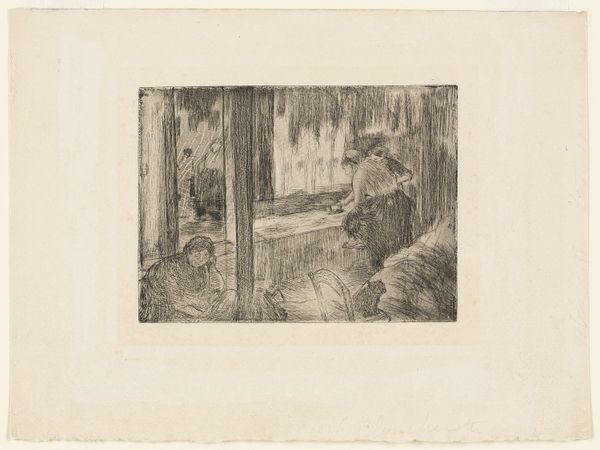
drawing, paper, ink, pencil
#
portrait
#
drawing
#
narrative-art
#
pencil sketch
#
paper
#
ink
#
pencil
#
genre-painting
#
academic-art
#
watercolor
#
realism
Dimensions: height 299 mm, width 413 mm
Copyright: Rijks Museum: Open Domain
Curator: Look at this lively piece! "Kunstverzamelaar," or "Art Collector," created in 1884 by Charles Rochussen. It’s a genre scene rendered with ink, pencil, and watercolor on paper. Editor: There's a real sense of warmth despite the limited palette. I'm drawn to the meticulous detail in rendering textures – especially the folds of fabric and the glimmer of what looks like pewterware on the shelves. It conveys a comforting feeling of domesticity. Curator: Domesticity is an interesting observation, particularly because Rochussen made this at a time when genre painting was being debated. Should artists be showing daily life or should they focus on more historical or allegorical subject matter? This gives us a glimpse into the social circles that are arguing this topic through imagery. Editor: The central figure, presumably our collector, is studying a picture of his own, bathed in light. I notice how other artifacts are looming in the background surrounding him and on shelves behind him. Those items seem more than mere props, like extensions of his psyche and personality. Perhaps those were commonplace objects that possessed a certain power during that era? Curator: Well, think about how museums and private collections became accessible during this time, helping construct the visual identity of the bourgeoisie. Rochussen often poked fun at social pretenses and rising elites, and this depiction probably aims to remind its audience of the self-aware performance of art collecting. It is quite a theatrical display after all. Editor: I see your point – that there is a satire at play! I’m still caught by those potent artifacts surrounding him. Take the figure entering the space. Perhaps she serves to comment on the passage of time, acting as a shadow while the collector and his collected items become figures fixed in history and legacy. Curator: I hadn't considered that symbolic element before! What I appreciate about this piece is its contribution to understanding the democratization of art. Its legacy helps trace where, how, and why people experienced art through public consumption, while its materials highlight an artistic period’s shift in the function of imagery. Editor: This piece holds a unique interplay. It really underscores how even everyday scenes carry their weight of history and meaning when artists start digging deep into their subconscious intentions. Curator: Precisely! A potent blend of artistic style, social commentary, and nuanced representation of objects – an incredible glimpse into its time.
Comments
No comments
Be the first to comment and join the conversation on the ultimate creative platform.

